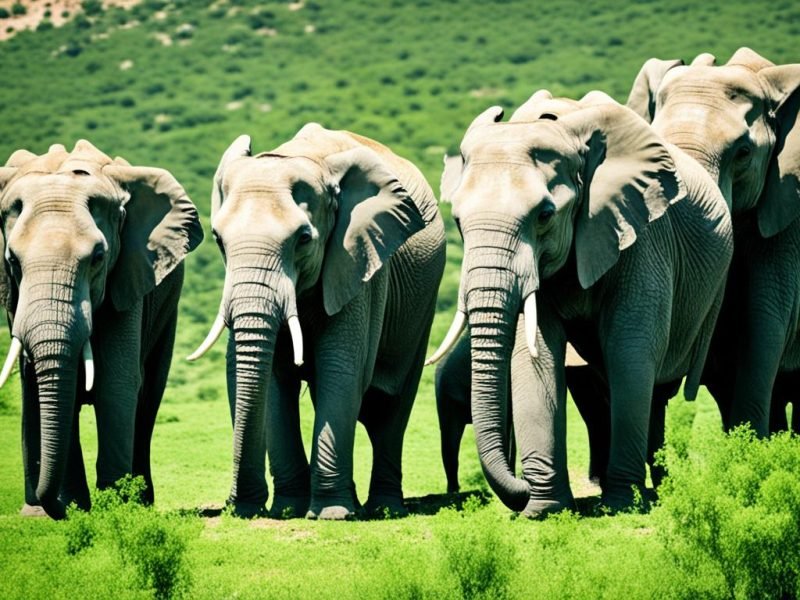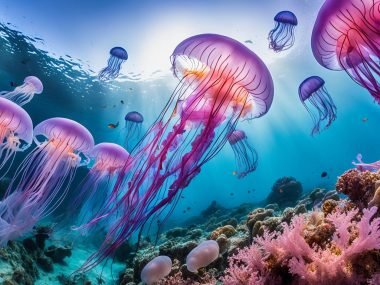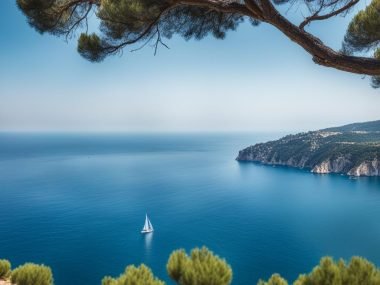In a country where the desert landscape stretches into the horizon and ancient ruins tell tales of a bygone era, one might find it hard to believe that Tunisia, a nation at the crossroads of Mediterranean and African worlds, was once home to the mighty elephant. Today, Tunisia’s elephant population is a mere figment of historical grandeur, with only four living elephants reported across various Tunisian locations, none of which roam wild in its terrains. This stark number emerges from the Elephant Encyclopedia and Database, which also recounts a historic tally numbering 42 elephants—each with its own tale within four Tunisian borders, yet the majority of these elephants have long passed into memory.
The inquiry, “Are There Elephants In Tunisia?”, leads one not into the wild but to a historical journey and present reflection. While the echoes of Tunisian elephants once resonated through the ancient city of Carthage, resonating with the glorious campaigns of Hannibal and his war elephants, modern-day Tunisia’s connection to these majestic creatures is limited to captivity—a stark contrast to the bygone era’s abundant presence.
Key Takeaways
- Tunisia has no current presence of wild elephants within its ecosystems.
- The Elephant Encyclopedia and Database indicates a total of four living elephants in Tunisia.
- All Tunisian elephants accounted for are in captivity, without any evidence of a wild population.
- Tunisia’s historic legacy with elephants is largely tied to its ancient city-state, Carthage.
- The noticeable absence of elephants in the wild reflects a significant historical and environmental shift.
Understanding Tunisia’s Elephant History
The story of elephants in Tunisia is one steeped in history and legend, a saga that harkens back to the days of the formidable city-state of Carthage. Here, the use of war elephants was not only a symbol of might but also a pivotal strategic element in ancient military campaigns. Among the most iconic figures associated with these majestic creatures was the Carthaginian general Hannibal Barca, whose name remains synonymous with the formidable passage of African elephants in Tunisia across the Alps during the Second Punic War.
Carthage and the Historical Use of War Elephants
The association between Carthage and its elephants is one of the most striking aspects of ancient wildlife in Tunisia. These animals were intricately trained and became a cornerstone of the Carthaginian military, especially under the guidance of Hannibal. The strategic use of elephants in warfare not only showcased the might of Carthage but also demonstrated the deep-rooted connection between Tunisians and these creatures during that epoch.
The Demise of Native Elephant Populations
Alas, the grandeur of Tunisia’s war elephants could not withstand the test of time. Ages have passed since the last native elephants roamed the Tunisian landscapes. Their extinction is a tale of both natural and human-induced changes, painting a canvas of historical intrigue against the backdrop of environmental evolution. Wildlife in Tunisia today reflects a semi-arid environment, one that is sadly no longer hospitable to the large and majestic African elephants that once graced this land.
In remembrance of these magnificent beasts, the following table summarizes the connection between ancient Carthage and elephants in Tunisia:
| Aspect | Details |
|---|---|
| Historical Significance | Integral to Carthage’s military might and cultural identity |
| Famous Battle | Hannibal’s crossing of the Alps during the Second Punic War |
| Reason for Decline | Environmental changes and increased human activity |
| Modern Relevance | Serves as a historical symbol with no wild presence today |
Indeed, the history of elephants in Tunisia is one that fosters a sense of awe and wonder—a chapter from the past that continues to resonate through the annals of time.
Current Status of Elephants in Tunisia
The Tunisia elephant population, as it stands today, is notably absent from its once vast and varied terrain. Unlike past centuries when Tunisia wildlife elephants would have roamed freely, the contemporary landscape of the country presents a different reality. Current records and scientific studies bring to light that there are no known wild elephant populations living in Tunisia at this time. In contrast to the diverse fauna that characterizes the region, these majestic creatures are instead relegated to lives within the confines of captivity.
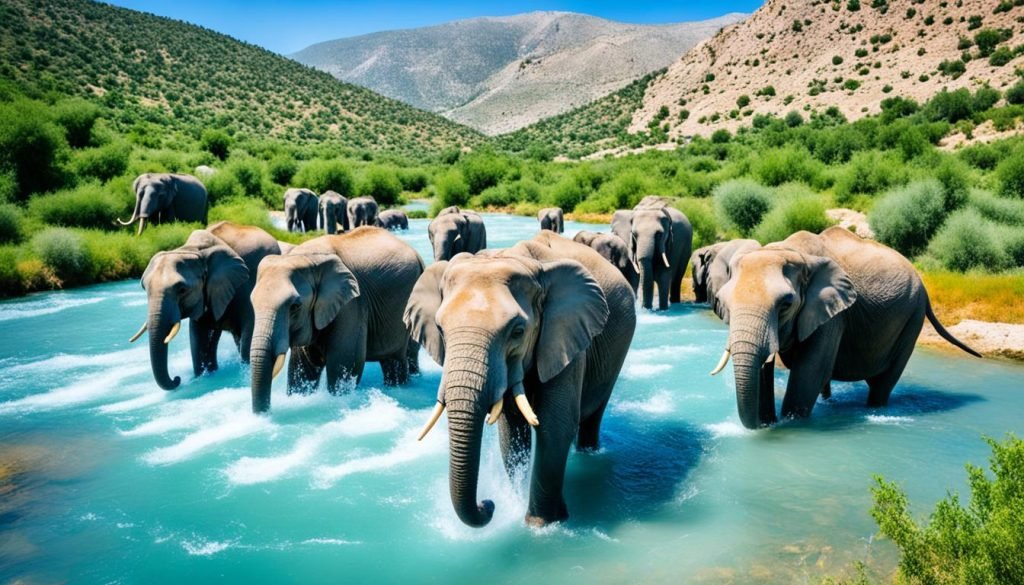
Of the elephants that do reside in Tunisia, their habitats are far from the sprawling savannas and forested areas one typically associates with elephant environments. Designed enclosures in select locations across the country serve as homes to the few elephants that constitute the present-day Tunisia elephant population. The existence of these elephants offers a glimpse into the deep historical roots Tunisia shares with these animals, albeit none of which remain in the wild.
For those intrigued by the status of these majestic animals in Tunisia, it is of interest to recognize two distinctive points: the first being that international efforts and conventions focused on wildlife conservation often do not align with the context of Tunisia’s elephant landscape; the second point is that although the country lacks a wild elephant presence, the few captive individuals continue to stir curiosity and elicit a sense of wonderment amongst locals and visitors alike.
In the absence of natural populations, the Tunisia wildlife elephants that do exist serve a purpose beyond mere survival. They are symbols of historical significance, educational resources, and, at times, embassadors for conversations on conservation. For the foreseeable future, they remain living testaments to the country’s storied past with these grand animals, while also marking an era where wild elephants are but a memory in Tunisia.
Elephant Sightings and Population in Modern Tunisia
In the contemporary landscape of Tunisia, elephant sightings are rare and typically confined to controlled environments. Despite the country’s rich history with these majestic creatures, the Tunisia wildlife elephants of today are distinct from their ancestors, with their presence now preserved within private collections of elephants and Tunisia elephant holding facilities. The Elephant Database serves as a crucial resource in tracking and understanding the current status of these animals within the nation.
Recorded Elephant Locations According to Elephant Database
The Elephant Database meticulously records the locations and statuses of elephants across the globe, providing key insights into elephant sightings Tunisia. This resource has been instrumental in monitoring the surviving elephants within the country, ensuring that they are under appropriate care and management. With only a handful of elephants recorded, the database highlights the rarity of these animals in Tunisia’s modern-day setting.
Tunisia’s Elephant Holding Facilities
The Tunisian landscape features several holding facilities that have become the sanctuaries for the country’s remaining elephants. Notably, these Tunisia elephant holding facilities are not indicative of a wild population but of a managed one, where elephants live under human care. These facilities include zoos as well as other managed habitats, ensuring the survival and well-being of elephants that reside within the confines of Tunisia’s borders.
Private Collections and Zoos with Living Elephants
Tunisia’s existing elephant population predominantly consists of individuals residing in zoological parks and private collections of elephants. Institutions like the Sousse Friguia Zoo and the Tunis Belvedere Zoo play a pivotal role in these elephants’ lives, offering both a home and a connection to the country’s storied past with the species. While these locations support elephant life, they also underscore the absence of any breeding programs, signaling that any addition to the current elephant population will likely depend on external factors.
Protection and Conservation Efforts for Elephants
Although Tunisian wildlife protection laws encompass a broad spectrum of species, the particular conservation efforts elephants Tunisia may require are not extensively outlined in legislative texts. This is largely because elephants are not considered native wildlife in modern-day Tunisia, and thus do not feature in the typical conservation narratives applicable to indigenous fauna. Nonetheless, the framework that dictates the conservation and protection of wildlife within Tunisia’s borders offers insight into the potential safeguards that could extend to elephants, should the need arise.
Protection measures in Tunisia generally focus on habitats and ecosystems that support a vibrant array of species. This approach is potentially beneficial to any non-native species residing within these protected areas, ensuring their welfare is not overlooked. Conservation efforts elephants Tunisia could benefit from could include anti-poaching patrols and the regulation of trade in wildlife, measures that are part and parcel of Tunisia’s commitment to the conservation and ethical treatment of animals under their care, whether they are endemic or not.
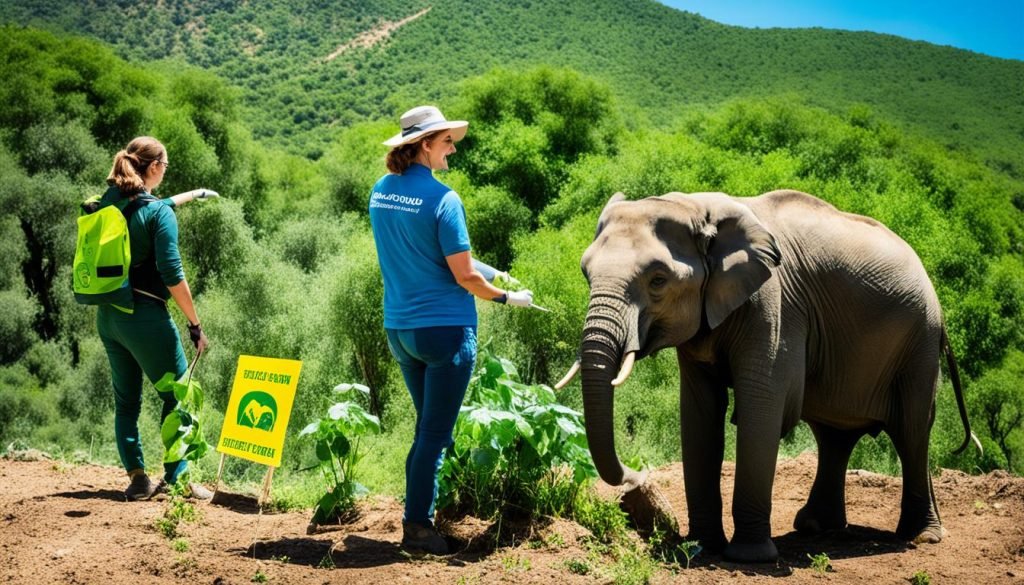
When contemplating conservation efforts elephants Tunisia might see implemented, it is essential to recognize the crucial role of education and awareness. Zoos, where the only present Tunisian elephants reside, provide a unique platform for educating the public. These institutions highlight the importance of global conservation initiatives and foster a spirit of stewardship that transcends borders, potentially influencing Tunisian wildlife protection strategies to be inclusive of all species in their care.
| Conservation Element | Relevance to Elephants | Impacts on Other Wildlife |
|---|---|---|
| Anti-Poaching Efforts | Ensures safety in captivity | Protects native species from illegal hunting |
| Regulation of Trade | Prevents unlawful sale or exchange | Monitors movement of fauna and flaura |
| Habitat Protection | Maintains humane living conditions | Safeguards natural biodiversity |
| Public Education | Raises awareness for global elephant conservation | Enhances understanding of ecological balance |
In review, while there are no targeted conservation efforts elephants Tunisia might require due to their non-native status, the presence of comprehensive Tunisian wildlife protection strategies benefits all species within the nation’s zoological parks and reserves. Continuity in the application of such measures ensures the welfare of elephants, though not indigenous, is aligned with the overall objectives of Tunisian wildlife conservation.
Wildlife in Tunisia: A Broader Perspective
The richness of Tunisia’s ecosystems is characterized by its diverse array of wildlife, including species that are uniquely Tunisian. An understanding of the conservation status of these species and the role that conservation sites play is crucial for ongoing efforts in biodiversity preservation.
Conservation Status of Tunisia’s Native Species
Tunisia’s commitment to conserving its endemic wildlife is exemplified by its adherence to the IUCN Red List, a comprehensive inventory assessing the global conservation status of biological species. The list categorizes species based on their risk of extinction, ranging from “Least Concern” to “Critically Endangered.” Unfortunately, elephants do not appear on this list for Tunisia, suggesting either their historical absence in recent times or a prior extinction event. Nonetheless, Tunisia native species conservation remains a priority, with numerous initiatives targeted at safeguarding the habitat and continuity of other important species.
The Role of Zoos and Reserves in Wildlife Preservation
The role of Tunisian zoos and wildlife reserves is multifaceted, providing sanctuary for various species and serving as centers for wildlife education and research. Tunisian zoos, in particular, contribute significantly to wildlife conservation, acting as a bridge between nature and society. They not only hold the responsibility of caring for animals within their confines but also play a role in ex-situ conservation efforts, potentially aiding in the recovery of species found on the IUCN Red List Tunisia. Respectively, wildlife reserves Tunisia create pockets of protected areas where natural ecosystems can thrive, free from the pressures of urban development and agricultural expansion.
In table form, here are some of the native species found in Tunisia, their IUCN Red List Categories, and how conservation efforts are aiding in their survival:
| Species | IUCN Red List Category | Conservation Efforts |
|---|---|---|
| Barbary Leopard | Critically Endangered | Protected area management, Anti-poaching patrols |
| Atlas Cedar | Endangered | Reforestation projects, Controlled harvesting |
| Tunisian Spiny Mouse | Vulnerable | Habitat restoration, Research on ecological impact |
| Scimitar-horned Oryx | Extinct in the Wild | Captive breeding, Reintroduction programs |
These efforts showcase the dedication and imperative role of Tunisian zoos and wildlife reserves in not only hosting species but actively participating in their conservation. The synergy between in-situ and ex-situ conservation strategies is vital for the effective preservation of Tunisia’s natural heritage.
Conclusion
In the tapestry of Tunisia’s diverse ecological framework, the chapter of wild elephants has long since reached its end. Today’s Tunisia, with its rich cultural heritage and evolving landscape, bears no indication of wild elephants as active participants in its ecosystems. Instead, the presence of a handful of elephants in captivity underscores Tunisia’s elephant history, a narrative woven with threads of erstwhile grandeur and contemporary reality. They stand as a bridge connecting modern Tunisia to its storied past, wherein elephants were not only indigenous wildlife but iconic war companions and symbols of power.
The efforts for wildlife preservation in Tunisia have been directed towards safeguarding the plethora of native species that decorate its land and skies. These conservation initiatives, meticulously curated by the nation, showcase a dedicated engagement with the natural world. Nonetheless, as elephants do not populate the wilds of Tunisia nor are they a focal species within these conservation efforts, Tunisia’s wildlife protection schemes have evolved without the need to include these majestic megafauna.
Reflecting on Tunisia’s elephant history and the country’s wildlife conservation endeavors presents a distinctive blend of acknowledgment and adaptation. While Tunisia cherishes the memory of its bygone giants, it simultaneously advances towards a future of environmental guardianship tailored to its current inhabitants. Tunisia’s wildlife preservation efforts remain a testament to both the homage it pays to its ancient connections with elephants and the earnest commitment to its living, breathing natural heritage.

